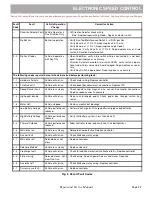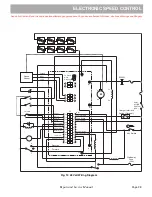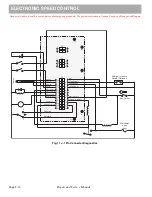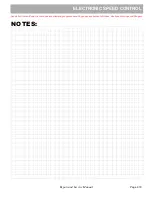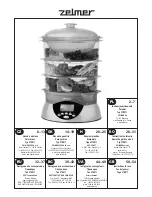
Page F-4
Repair and Service Manual
B
ELECTRONIC SPEED CONTROL
Read all of Section B and this section before attempting any procedure. Pay particular attention to Notices, Cautions, Warnings and Dangers.
GENERAL TROUBLESHOOTING
Tool List
Qty.
Floor jack ..................................................................... 1
Jack stands.................................................................. 2
Wheel chocks .............................................................. 4
Jumper wire (with alligator clips) ................................. 1
DVOM .......................................................................... 1
Socket, 3/8................................................................... 1
Ratchet ........................................................................ 1
Torque wrench, in. lbs.................................................. 1
Torque wrench, ft. lbs. ................................................. 1
Extension, 6" ............................................................... 1
Insulated wrench, 9/16" ............................................... 1
Wrench, 1/2" ................................................................ 1
Wrench, 7/16" .............................................................. 1
Phillips screwdriver, large ............................................ 1
Phillips screwdriver, small............................................ 1
Shop towel ................................................................... 1
Allen wrench, .050"...................................................... 1
Drill bit, 7/32” ............................................................... 1
Symptoms
Vehicle does not operate, operates poorly or intermit-
tently.
Testing
A maintenance feature of the controller is the ability to
diagnose electrical faults preventing the vehicle to oper-
ate at its fullest potential. A light on the controller face
will blink informing the technician to the cause of the
vehicle malfunction.
A series of blinks will indicate the fault code (one, two,
three, four or five followed by a pause and one, two,
three, four or five more blinks). By reading the decal
attached near the controller, or by reading the Diagnos-
tic Mode Fault Code chart (Ref Fig. 8), the fault, its
symptom(s) and corrective action to be taken can be
found.
It is unlikely that the mechanical adjustment of the pedal
box has changed, therefore the initial tests will be con-
ducted with a digital volt ohm meter (DVOM) to identify
the failed component.
A typical DVOM is shown in illustrations. A recom-
mended DVOM is available through the E-Z-GO Service
Parts Department as P/N 27481-G01. Any DVOM may
be used; however, the accuracy, controls, displays and
features may vary depending on the make and model.
Always follow the meter manufacturer’s recommenda-
tions and instructions for the use and care of the meter.
To assure accurate readings, be sure to set the meter to
the closest voltage reading above the expected voltage.
To prevent injury resulting from unexpected
movement of the vehicle, always raise the rear
wheels before conducting any tests.
To prevent possible motor damage, never
operate vehicle at full throttle for more than 4-5
seconds while vehicle is in a “no-load” condi-
tion.
For static tests, raise the rear wheels of the vehicle and
support the vehicle on jack stands (Refer to the Lifting
Procedure in Section ‘B’ Safety). Test the vehicle stabil-
ity before proceeding.
Place the direction selector in ‘F’ and turn the key switch
to ‘ON’. Depress the accelerator pedal until the micro
switch in the pedal box activates which should cause the
solenoid mounted to the controller to make an audible
click. If the solenoid does not click, test the batteries.
Testing Battery Voltage
It is important to determine the condition of the battery
set before proceeding with any electrical troubleshoot-
ing. An open voltage test is of little use since a battery
that has deteriorated to the point of requiring replace-
ment can still show six volts or higher in an open voltage
test. If there is any doubt as to the adequacy of the bat-
tery set, charge the batteries and perform a load test
using a discharge machine following manufacturer’s
instructions. If batteries are satisfactory, recharge bat-
tery set.
With the adequacy of the batteries confirmed, use a
DVOM connected directly to the battery terminal posts to
determine the open voltage of the set (Ref Fig. 5). In the
following tests, this voltage level will be used as a refer-
ence. Some loss due to resistance of wires and connec-
tors may be indicated by readings that could be up to
one volt less than the reference voltage. No reading indi-
cates an “open” condition and the battery wires should
be inspected for a broken or disconnected wire or com-
ponent.
Содержание Shuttle 2
Страница 6: ...Page iv Repair and Service Manual NOTES TABLE OF CONTENTS ...
Страница 195: ......


















